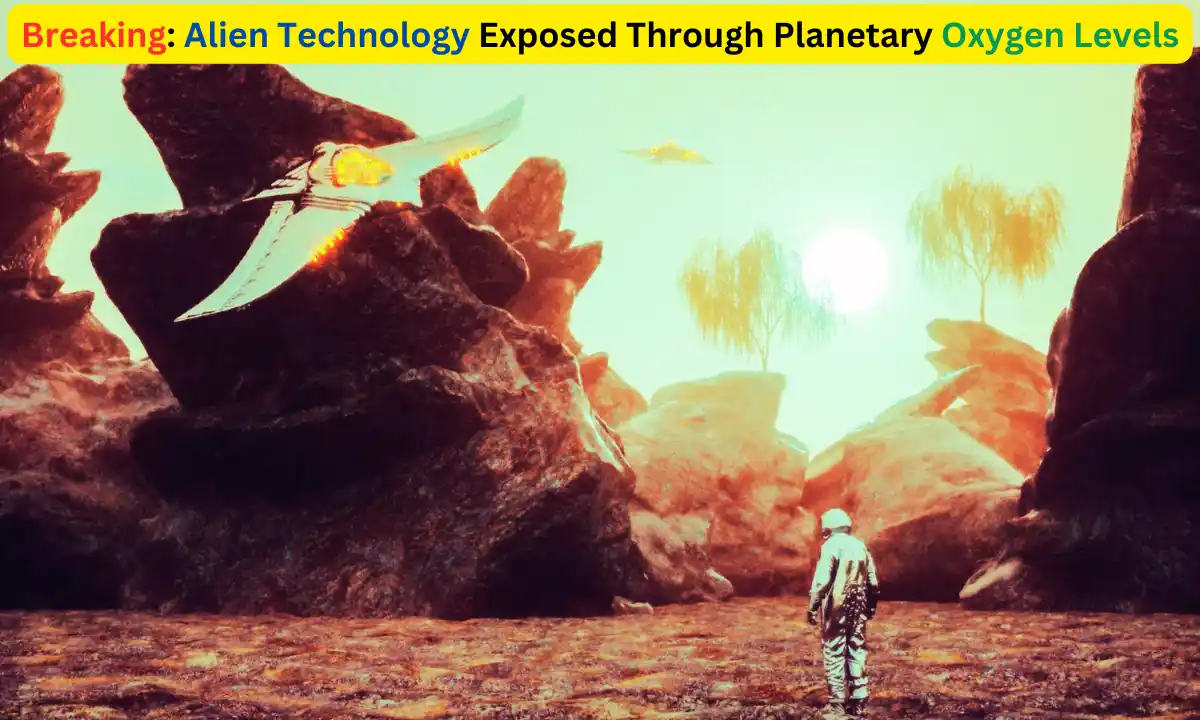The Cosmic Connection: Oxygen Levels and Extraterrestrial Technology
In the relentless pursuit of unraveling the mysteries of extraterrestrial life, scientists are expanding their horizons beyond conventional biological indicators to include the tantalizing prospect of technological signatures on distant planets. The quest now involves deciphering the correlation between oxygen levels and the emergence of advanced technology on cosmic scales.
The Pioneering Study
Distinguished researchers, Adam Frank from the University of Rochester, and Amedeo Balbi, an Associate Professor of Astronomy and Astrophysics at the University of Roma Tor Vergata, Italy, spearhead a groundbreaking exploration into the intricate relationship between atmospheric oxygen and potential extraterrestrial intelligence.
Alien Technology and Oxygen Signatures
The crux of their study lies in spotlighting the profound connection between atmospheric oxygen and the manifestation of advanced technology on planets far beyond our own. Frank provocatively questions the link between planetary conditions and the likelihood of intelligent, technology-producing life.
“We are ready to find signatures of life on alien worlds,” asserts Frank. “But how do the conditions on a planet tell us about the possibilities for intelligent, technology-producing life?”
Balbi adds a layer to the discussion, delving into the exploration of whether any atmospheric composition can sustain advanced technology. Their findings suggest that stringent atmospheric requirements may dictate the existence of such advancements.
“In our paper, we explore whether any atmospheric composition would be compatible with the presence of advanced technology,” Balbi says. “We found that the atmospheric requirements may be quite stringent.”
The Concept of Technospheres
A pivotal addition to the discourse is the introduction of the concept of “technospheres.” These are vast domains of advanced technology emitting unique signals, or “technosignatures,” indicative of extraterrestrial intelligence.
The researchers argue that oxygen, crucial for respiration and metabolism in multicellular organisms, is also indispensable for the development of fire—a cornerstone in the evolution of technological civilizations.
Evolution of Technology on Earth
Tracing the historical trajectory of Earth, the researchers unveil a fascinating connection between controlled fire usage and metallurgical advancements. They reveal that the feasibility of controlled fire and subsequent metallurgical progress was only achievable when atmospheric oxygen levels hit or surpassed 18 percent.
This revelation implies that planets with significant oxygen concentrations are prerequisites for the development of advanced technospheres capable of leaving detectable technosignatures.
“You can have everything else work out, but if you don’t have oxygen in the atmosphere, you’re not going to have a technological species,” emphasizes Frank.
The Oxygen Bottleneck
The research underscores a critical bottleneck: high oxygen levels are imperative for the evolution of a technological species. Without this key component, all other conditions may align, but the advancement of technology remains unattainable.
“The presence of high degrees of oxygen in the atmosphere is like a bottleneck you have to get through in order to have a technological species,” notes Frank.
This revelation introduces a unique perspective—the oxygen levels required for sustaining complex life and intelligence are lower than those needed for the development of technology.
Implications and Future Exploration
Frank concludes by emphasizing the need to focus on planets with high oxygen levels, suggesting that their atmospheres could be significant indicators in locating potential technosignatures.
“Targeting planets with high oxygen levels should be prioritized because the presence or absence of high oxygen levels in exoplanet atmospheres could be a major clue in finding potential technosignatures,” states Frank.
Balbi, however, injects a note of caution into the discussion. He highlights the monumental implications of discovering intelligent, technological life on another planet and stresses the importance of skepticism regarding technosignatures from planets with insufficient atmospheric oxygen.
“The implications of discovering intelligent, technological life on another planet would be huge,” adds Balbi. “Therefore, we need to be extremely cautious in interpreting possible detections. Our study suggests that we should be skeptical of potential technosignatures from a planet with insufficient atmospheric oxygen.”
In Summary
This groundbreaking study significantly enhances our understanding of the ongoing search for life beyond Earth. It not only sheds light on the intricate relationship between oxygen levels and extraterrestrial technology but also serves as a crucial guidepost in the awe-inspiring cosmic journey towards unraveling the mysteries of the universe.



